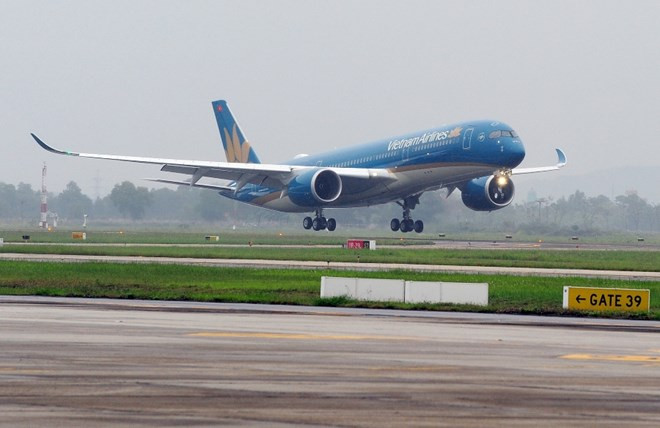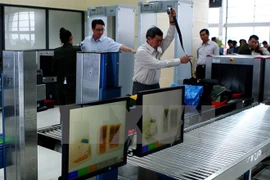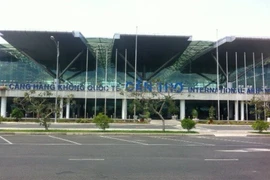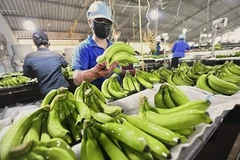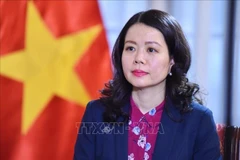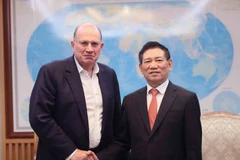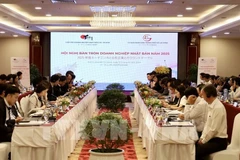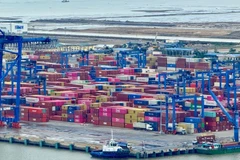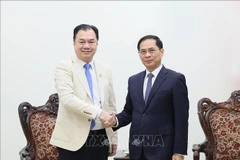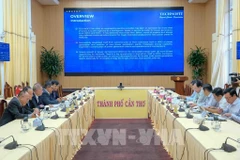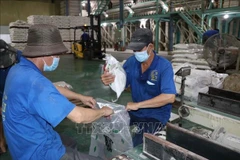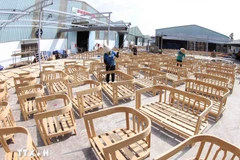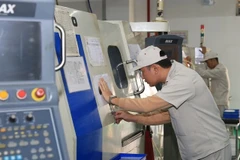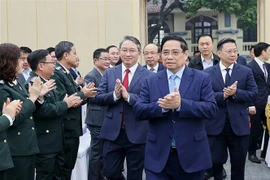Hanoi (VNA) — The domestic aviation market is expected to see changes in 2018with the participation of new and big private investors, experts said.
Thedemand is still more than the supply in the market, thus there is a need toattract more investors. Statistics show that the rate of Vietnamese peopletravelling by air is lower in comparison with other countries in the world andthe region. The rate increased from 0.5 percent in 2012 to 0.8 percent in 2016.
Expertstold Nguoi Lao Dong (The Labourer) Newspaper that of the current sevenairlines operating in Vietnam, only four belonged to the country. VietnamAirlines and Vietjet Air are leading the market by holding more than 40 percentof market shares each.
Theparticipation of new airlines could help increase the competitiveness in themarket, thus benefiting the people, experts said.
Pickingon the trend, private companies have been rushing to establish their ownairlines.
On May31, giant property FLC Group announced the establishment of the Viet BambooAirlines Ltd. Co., laying the foundation for the formation of an airline underthe name of Bamboo Airways. The airlines with charter capital of 700 billionVND (31.2 million USD) would be eligible for operating 10 aircraft.
Accordingto Dang Tat Thang, Director General of Viet Bamboo Airlines Ltd. Co., FLC is finalisingits project on the airline with the aim of launching it by the end of 2018.
Thangsaid Bamboo Airways would take a different path from its domestic counterparts,elaborating that it would focus on direct services connecting internationalmarkets with emerging tourist destinations in Vietnam, instead of major urbanareas where the aviation infrastructure is already overloaded.
He addedthat priority would be given to localities where FLC has built major touristcomplexes, including Quang Ninh and Hai Phong in the north, Thanh Hoa and QuyNhon (Binh Dinh province) in the central region, and Nha Trang (Khanh Hoa province)and Phu Quoc (Kien Giang province) in the south.
Thangsaid Bamboo Airways would be a “hybrid” airline, which would blend low-costtraits with those of traditional or full-service carriers.
Currently,21 airports are operating across the country, but the two major facilities in Hanoi(Noi Bai International Airport) and HCM City (Tan Son Nhat InternationalAirport) alone account for 75 percent of the total passenger output. Meanwhile,many airports in localities with great tourism potential are operating undercapacity.
Theoperation orientation of Viet Bamboo Airways is expected to help better exploitthe existing aviation infrastructure while avoiding overloaded airports, thecompany said.
Theestablishment of Viet Bamboo Airlines means that the market has three airlineswaiting for either licence or adjustment in their licence to expand theiroperation scale, including Hai Au, Viet Bamboo Airlines and Vietstar Air.
Vo Huy Cuong,deputy head of the Civil Aviation Authority of Vietnam (CAAV), said theauthority had not received an application from FLC and Hai Au. VietstarAirlines, with charter capital of 800 billion VND, had not been given licencesfor its operation, as it was waiting for Tan Son Nhat’s expansion, despitehaving announced the flight plan since the beginning of last year.
Hai Au’srepresentative told the newspaper that it had implemented the necessary legalprocedures to adjust its operation scale from seaplane to a joint airline withinternational flights. It was expected that Hai Au would officially submitapplication to the CAAV in the next two months to become operational in 2018.
“Ourflying plan does not relate to adjustment of Tan Son Nhat’s expansion, so thetime for granting licence will not be extended,” the representative said,adding that their flight network would focus on international flights from Hanoiand Da Nang to Southeast Asian and Asian countries.
Meanwhile,Vietstar Air still expected to become operational in 2018 by reducing its scaleby a half.-VNA
